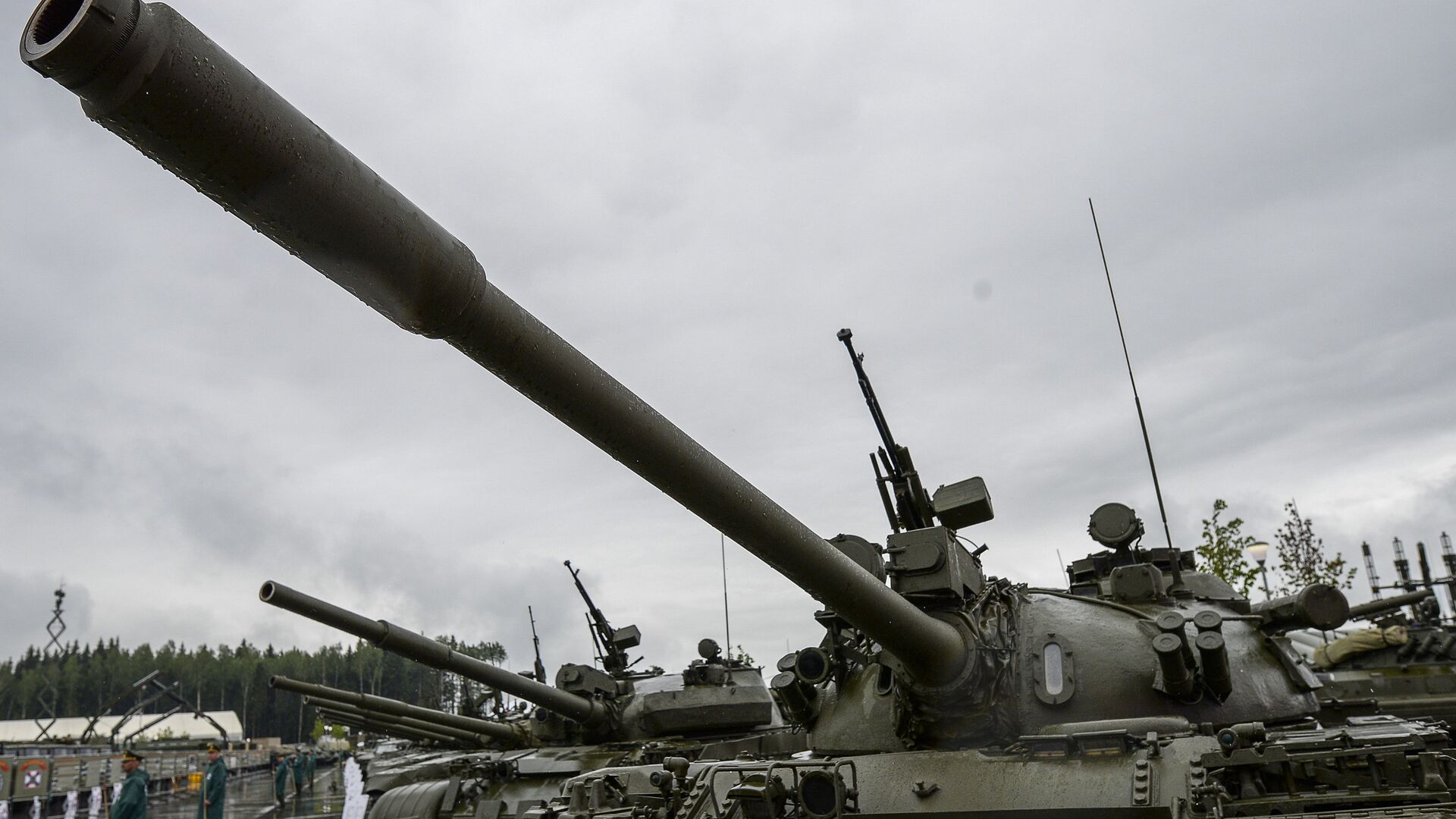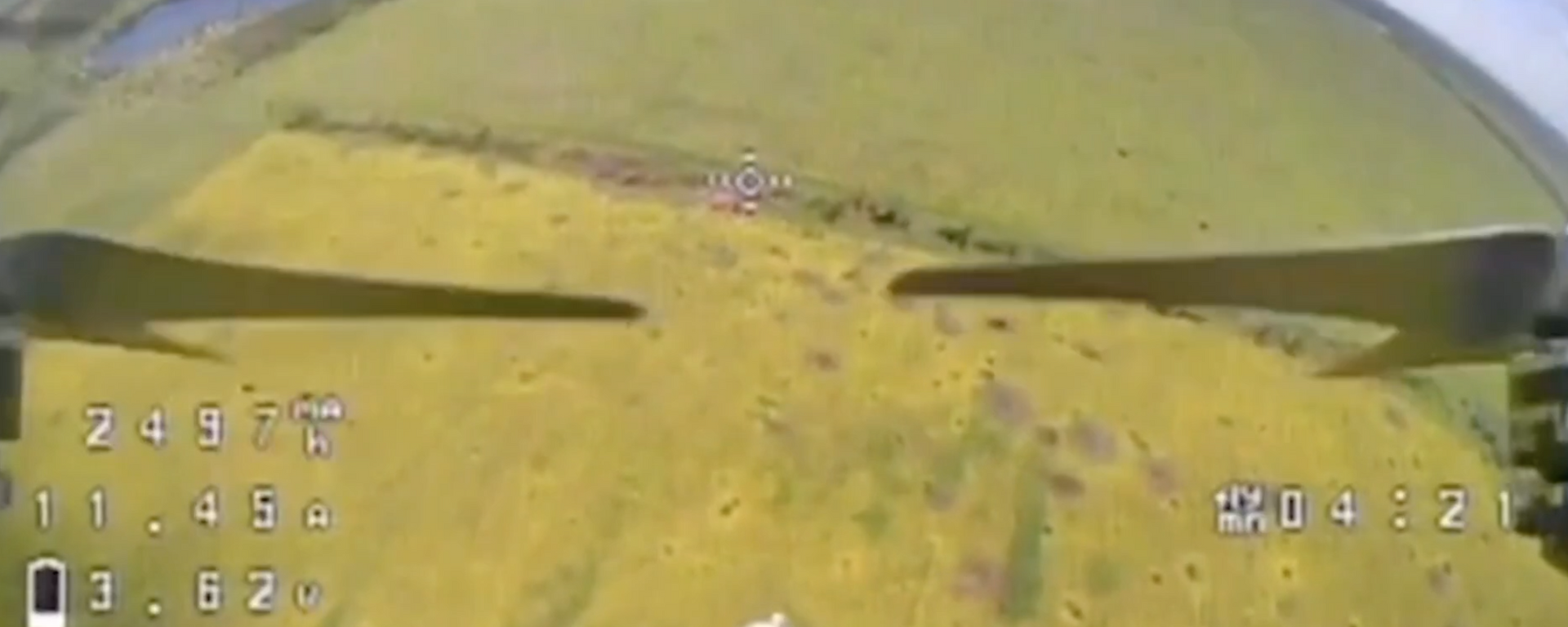https://sputnikglobe.com/20230620/kamikaze-tank-used-by-russia-in-ukraine-is-nothing-new-1111344650.html
Same Old, Same Old: Russia Uses Well-Known 'Kamikaze Tank' Tactic in Ukraine
Same Old, Same Old: Russia Uses Well-Known 'Kamikaze Tank' Tactic in Ukraine
Sputnik International
Last week, Russian troops employed a somewhat unorthodox tactic against Kiev regime forces by loading a captured Ukrainian tank to the brim with explosives and sending it unmanned towards enemy lines, to be detonated upon approach.
2023-06-20T19:02+0000
2023-06-20T19:02+0000
2023-06-23T09:48+0000
russia's special operation in ukraine
tank
explosives
kamikaze
drones
https://cdn1.img.sputnikglobe.com/img/102344/18/1023441843_0:150:3107:1898_1920x0_80_0_0_6eade76d88847a5f3cc3c92c89918ce7.jpg
Earlier this year, Russian combat engineers employed a similar trick to take out a Ukrainian strongpoint, using an MT-LB multi-purpose armored vehicle loaded with aircraft bombs.Commenting on these developments, retired Russian naval officer and military analyst Vasily Dandykin remarked that such tactics are hardly anything new as it is essentially mine warfare, pointing out that unmanned ground vehicles loaded with explosives were used as early as during World War II.Noting that Russia already has drones equipped with cannons, anti-tank missiles and automatic grenade launchers, Dandykin argued that land-based kamikaze drones are unlikely to become a common occurrence.The analyst observed that kamikaze attacks are primarily used by airborne and naval drones, noting how Ukraine recently attempted to use the latter type of weaponry to attack Russian warships in the Black Sea and the Russian port of Sevastopol.As for what kind of land-based drones might appear on the battlefield in the future, Dandykin suggested that these unmanned vehicles will likely be remotely controlled and designed for repeated use, striking at the enemy with onboard weaponry instead of simply blowing themselves up.
https://sputnikglobe.com/20230617/watch-russian-army-destroy-enemy-stronghold-using-kamikaze-drone-1111247864.html
Sputnik International
feedback@sputniknews.com
+74956456601
MIA „Rossiya Segodnya“
2023
News
en_EN
Sputnik International
feedback@sputniknews.com
+74956456601
MIA „Rossiya Segodnya“
Sputnik International
feedback@sputniknews.com
+74956456601
MIA „Rossiya Segodnya“
unmanned ground vehicles, drone warfare, mine warfare
unmanned ground vehicles, drone warfare, mine warfare
Same Old, Same Old: Russia Uses Well-Known 'Kamikaze Tank' Tactic in Ukraine
19:02 GMT 20.06.2023 (Updated: 09:48 GMT 23.06.2023) Last week, Russian troops employed a somewhat unorthodox tactic against Kiev regime forces by loading a captured Ukrainian tank to the brim with explosives and sending it unmanned towards enemy lines, to be detonated upon approach.
Earlier this year, Russian combat engineers employed a
similar trick to take out a Ukrainian strongpoint, using an MT-LB multi-purpose armored vehicle loaded with aircraft bombs.
Commenting on these developments, retired Russian naval officer and military analyst Vasily Dandykin remarked that such tactics are hardly anything new as it is essentially mine warfare, pointing out that unmanned ground vehicles loaded with explosives were used as early as during World War II.
Noting that Russia already has
drones equipped with cannons, anti-tank missiles and automatic grenade launchers, Dandykin argued that land-based kamikaze drones are unlikely to become a common occurrence.
“When the need arises, of course, [land-based] engineering drones may be used, the ones used for mine-sweeping,” he mused. “But this is a whole different matter. Such drones are already being actively used, quite successfully, I might add.”
The analyst observed that kamikaze attacks are primarily used by airborne and naval drones, noting how Ukraine recently attempted to use the latter type of weaponry to attack Russian warships in the Black Sea and the Russian port of Sevastopol.
As for what kind of land-based
drones might appear on the battlefield in the future, Dandykin suggested that these unmanned vehicles will likely be remotely controlled and designed for repeated use, striking at the enemy with onboard weaponry instead of simply blowing themselves up.
“After all, even when [land-based] drones are being used, it is only those that are remotely controlled and can be returned home,” he said.



